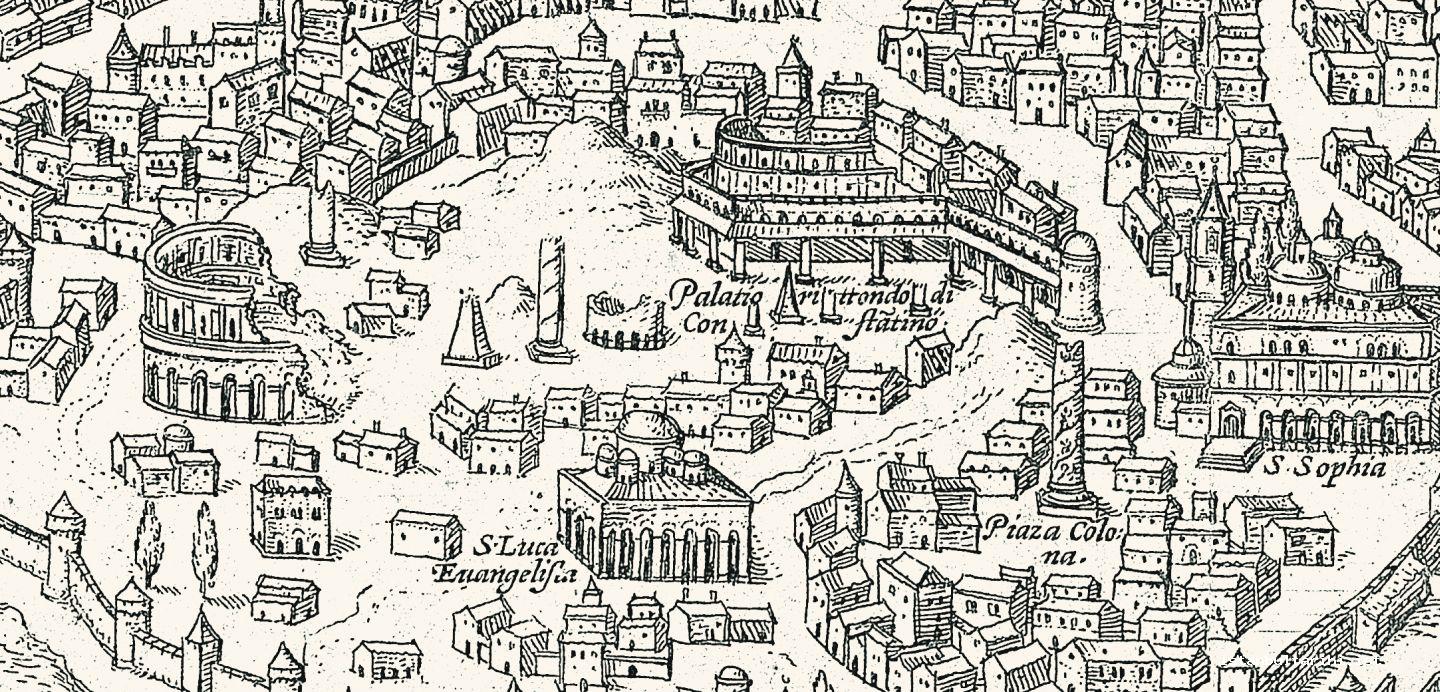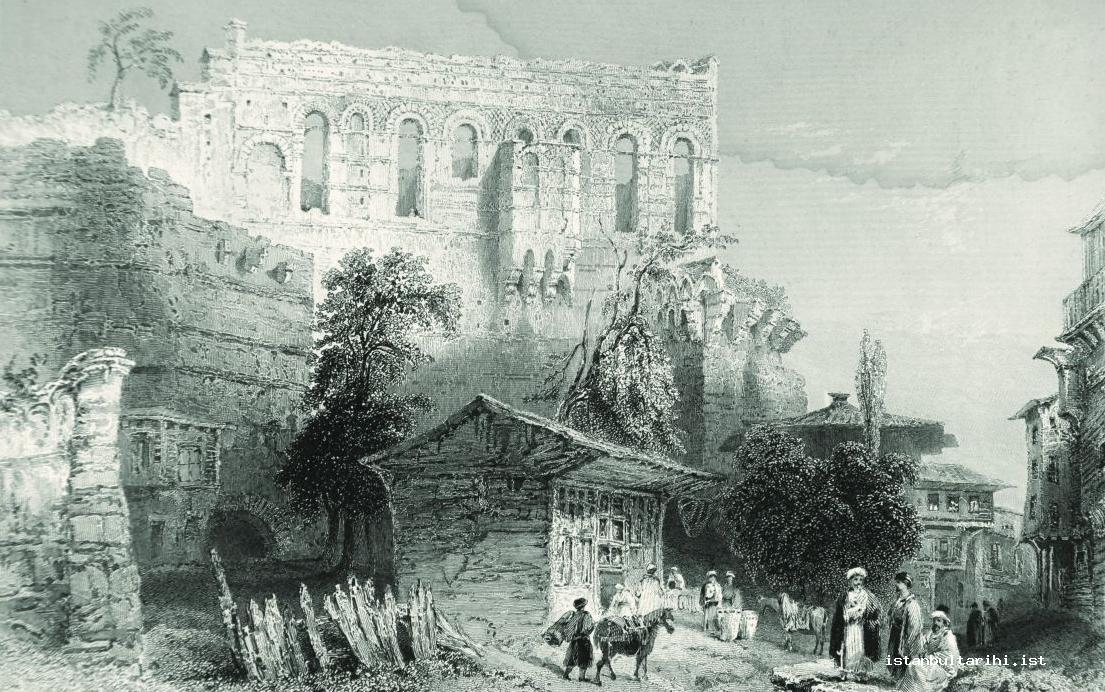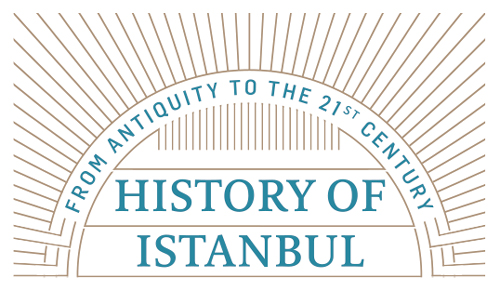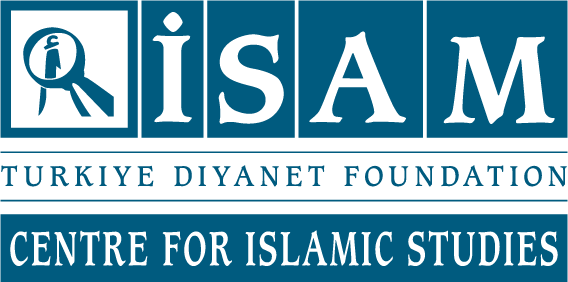The Byzantine Empire—a power that claimed to be the universal successor to the Roman Empire— had political, military, commercial, and cultural relations with many nations during its long period of rule. Ambassadors naturally played a great role in forming the foundations of these relationships.
The Byzantine Empire had a specialized department which in charge of diplomacy. Until the seventh century, there was an officer known as the magister officiorum who acted as the head of this department. The magister officiorum was responsible for many tasks including selecting imperial ambassadors abroad, hosting foreign ambassadors and arranging their audiences with the emperor, and conducting official ceremonies. From the seventh century on, these tasks were assigned to an independent unit known as the Logothetes tou dromou. There was a subunit, the Scrinium Barbarorum, responsible for hosting ambassadors in a special guesthouse and accompanying them during their stay in the city.1 In diplomatic meetings, the Byzantine Empire was carefulin the to observation ofe formal and traditional etiquette and agreements. This included presenting impressive gifts to legations, behaving in a manner that was in keeping with the stature of the empire, and arranging political marriages from time to timearranging .
Vital to the empire’s diplomatic network, ambassadors were carefully selected by the emperor. For this important service, the emperor chose individuals who were trustworthy and qualified in diplomacy and persuasion; those who were sophisticated, multilingual, conscientious, and discreet were preferred. Ambassadors were responsible for announcing the newly-crowned Byzantine Emperor to other nations. As part of this duty, ambassadors were to also convey that the Byzantine Empire acknowledged other heads of state who ascended their thrones. They were also responsible for announcing imperial triumphs, births, marriages, and deaths. Ambassadors had to put imperial interests above all else while performing their duties. Emperor Constantine VII Porphyrogennetos’ work De Cerimoniis provides highly-detailed information regarding the ceremonies conducted for ambassadors or foreign guests in the empire.2
Ambassadors arriving in Byzantine were generally welcomed by the relevant government officers at any of Constantinople’s gates or ports , or— more specifically—in Chalcedon (Kadıköy). Imperial officers would inquire about their journey, and whether they had met with any troubles, before accommodating their newly-arrived guests in buildings built specifically for diplomatic relations. These buildings were equipped with catering services, heating systems, and rest areas. Ambassadors then travelled to the palace or other sites on decorated and well-trained horses. During their ride, they were escorted by uniformed and armored guards.
Before the eleventh century, ambassadors were typically hosted in the magnaura of the Great Palace. Afterwards, they were hosted in the Palace of Blachernae. After being welcomed by the magister officiorum—or, later, the Logothetes tou dromou—ambassadors were treated to exhibitions of imperial magnificence in the palace. This was also an opportunity for the ambassadors to be presented to the emperor. First, while paying attention to hierarchy, senators and notable statesmen paid their respects to the emperor. They would take their place on either side of the emperor who sat on his throne with a golden crown and in purple robes. Ambassadors would then pass through long corridors to the hall and, accompanied by imitation lion roars and birdsong, they would bow respectfully to the emperor. Throughout this process, ambassadors generally did not initiate conversation; instead, the logothetes would ask them questions. When they finally reached the emperor to deliver the letter they had brought, the throne would be raised by a mechanical system meant to increase the emperor’s magnificence and implying his splendor to bewas untouchable. Towards the end of the ceremony, the ambassadors presented gifts of peace, friendship, and goodwill to the emperor. They then—through a different door—left the hall accompanied by the imitation lion roars.3
Liutprand, the ambassador of King Berenger II of Italy, used similar language to describe both his presentation before the emperor and events in Magnaura during his first visit to Constantinople between 949 and 950. This was during the reign of Emperor Constantine VII. Liutprand stated that Magnaura was immense and extremely beautiful. He also noted that in front of Emperor Constantine VII’s throne was a gilded bronze tree on which gold-plated bronze birds rested. When the throne on the ground suddenly rose upwards, accompanied by the sound of roaring lions and singing birds, Liutprand found himself in the presence of the emperor. He saluted the emperor three times while kneeling, and when he stood up he saw that the emperor had risen almost to the ceiling. Liutprand was very surprised at this display. He also stated that the emperor did not speak directly to him, as was customary, but instead asked what King Berenger had been doing and inquired about his health through the Logothetes. At the end of the ceremony, Liutprand presented a gift from his king as a gesture of peace, as did all other foreign ambassadors. Liutprand says these gifts included nine pieces of armor, seven shields, two golden-plated silver cups, swords, pikes, and four eunuchs. Liutprand then left the hall once again accompanied by birdsong and the imitation roars of lions.4
In 1332, Ibn Battuta—one of the most important travelers of the foursixteenth century—joined the retinue of Beylun Hatun, wife of the Uzbek Khan as well as the daughter of Byzantine Emperor Andronikos III Palaiologos (1328–1341). He came to Constantinople and appeared before the emperor around this time. Describing the ceremony, Ibn Battuta states that he entered a great hall decorated with mosaics while accompanied by four guards. The hall contained many people who stood in silence. It was lined with trees and a fountain sat in its center. He notes that three officers in the middle of the hall summoned him to the emperor’s domed chamber where the empress sat by Emperor Andronikos III. After a short while, Beylun Hatun and her siblings took their places just below the throne. There were six guards on the right, four guards on the left, and four guards to the rear of the emperor. Ibn Battuta notes how anxious he was before greeting the emperor. Andronikos told him to sit for a while, and it was only after Ibn Battuta rested for a while that he could finally salute the emperor. Ibn Battuta mentions that the emperor inquired about Jerusalem, Qubbat al-Sakhra, Bethlehem, Damascus, Egypt, Iraq, and Anatolia using his translators. The emperor was pleased with the answers he received and ordered his servants to take great care of the visitor. Ibn Battuta was given a hilat (robe/cloak) and a magnificent horse with a harness, as well as a parasol that was generally held over the emperor’s head.

There were some ambassadors who left the empire with different impressions of such diplomatic receptions. For instance, the Abbasid ambassador Umar b. Hamza —appointed by the Abbasid caliph Abu Ja’far al-Mansur (754–775)— arrived in Constantinople during the reign of Emperor Constantine V (741–775). Describing how he felt in front of the emperor, Umar b. Hamzah says, “I was so scared that I thought this was certainly the last day of my life.” Writing about the same hall as described by Liutprand, he says the hall was so great that at first he could not even see the emperor, and that green smoke soon filled the space. At this point, he was able to stand before the emperor. He then saluted Constantine V and presented a letter from the caliphate. Umar states that, at the emperor’s request, he followed the audience with a tour of the palace and the surrounding area . When Umar finally told the emperor how afraid he had been and asked why this protocol was in place, Constantine V replied, “This is how we put fear into the hearts of ambassadors.”5
An interesting aspect of the reception is that both ambassadors and foreign rulers alike had to stand in front of the emperor. This protocol was only changed on the will of the emperor himself. In some situations, for example, foreign visitors were allowed to sit but only at a lower position than the emperor. In 1162, the Seljukid sultan Kılıçarslan II (1155–1192) came to Constantinople to visit Emperor Manuel Komnenos (1143–1180). He was greeted with an ostentatious ceremony that displayed the empire’s magnificence. Meanwhile—sitting in his purple suit bejeweled with pearls on a high throne ornamented with gold, pearls, rubies, and sapphires—Manuel insisted that the sultan have a seat. Kılıçarslan II refused at first because he believed this would go against standard practice; however, he could not resist the emperor’s insistence and eventually elected to sit on a lower seat close to the throne.6

For some people, it was unnecessary to stand in the presence of the emperor. A similar situation happened during the First Crusade. According to the records of Byzantine historian Anna Komnene, a Western knight was disrespectful and sat on Emperor Alexios I Komnenos’ throne when the emperor received the leaders of the Crusades in Blachernae Palace . Baldwin of Boulogne, who would later establish the County of Edessa (Urfa), warned the knight that it was inappropriate to behave in such a way. He said , “You should not have done that…. Roman emperors do not allow their subjects to sit next to them….” The knight looked at the emperor crossly and grumbled, “Look at this man! He sits on a throne on his own while brave commanders wait standing.”7
After the ceremony, the emperor presented gifts to the ambassadors and they would dine in a hall called the Triklinos, which had been built by Justinianus II. During dinner, which was accompanied by music, ambassadors had a chance to talk to the emperor. After dinner, silver gifts were presented to the ambassadors on golden trays. Occasionally, more than one banquet would take place. For instance, Constantine VII invited Liutprand to the banquet at Triklinos, and there he had the chance to speak with the emperor in person. The emperor also presented both Liutprand and his attendants with gifts. In 946, the Russian Princess Olga visited Constantinople during the reign of Constantine VII. After the ceremony in the magnaura, there were two banquets during the same day. The Empress Helene organized the second banquet. During this banquet, Olga and the empress had the opportunity to converse. Ambassadors or foreign visitors would have other opportunities to meet the emperor during such ceremonies and banquets, and they were generally hosted in the Byzantine palace in keeping with their country’s importance according to the emperor.8 Peter the Hermit arrived with his legion in the capital before the main armies of the First Crusades, and Emperor Alexios Komnenos greeted him at the palace. Komnenos gave him many gifts as well as money to exhibit the magnificence and power of the empire and to charm his visitor.9 Bohemund, another leader of the First Crusades, was overloaded with gifts to the point of embarrassment in Constantinople after meeting with Emperor Alexios. According to Anna Komnene, the daughter of Alexios who chronicled events, Bohemund was summoned to a room full of clothes, gold, silver, and very valuable articles. He was told that all these things were now his. Bohemond was puzzled and amazed; he could not believe his eyes and said, “If I had such wealth, I would have owned a number of countries by now.” Afterwards, Bohemond’s attendant noted that the emperor had bestowed these items on him.10
Some ambassadors, however, did not approve of such ceremonies in the Byzantine Empire. One of them was Liutprand, the Bishop of Cremona, who visited Constantinople for the second time during the reign of Nikephoros II Phokas (963–969). This time, he came to the city as the ambassador of the German emperor Otto I. He had returned to King Berenger II of Italy after his first trip pleased with the emperor’s attitude, but was not pleased during his second trip in 968. Emperor Nikeforos II Phokas was the reigning emperor this time and he did not have positive feelings about Otto. This meant that Liutprand found himself at the center of a bitter relationship. The ambassador regarded how the empire greeted him as disrespectful to both himself and his master, Otto. In his report about the visit, Liutprand notes how he despised the imperial ceremony and criticizes it sarcastically. Displeased with his accommodations as well, Liutprand states that he travelled to the imperial palace on foot and describes his presence before Emperor Nikephoros and the banquet as follows:
This monstrous man was like a dwarf with small eyes and a mole-like large head…He was scurrilous and as cunning as a fox; his clothes were like a farmer’s, rotten and sun-bleached…. He did not deem me worthy of taking the place of another member of the palace, and therefore I was seated at a distant bare table…. On the table, there was only one kind of butter and fish liquor. He asked me questions about your army and power. My answers were sincere and right but he shouted at me, “You’re lying. Your master cannot ride a horse. They don’t even know how to fight. The shape of their shields, weight of their armor, length of their swords, and lightness of their helmets prevent them from fighting.” Then he laughed and said, “Their gluttony prevents their work….” He did not give me a chance to answer and in a pejorative manner he said, “You are not Romans, just Lombards….” 11
If the Byzantines found the foreign ambassadors to be cultured, sympathetic, and wise, they would present them with the treasures and valuables of the palace, summon them to the games and celebrations taking place in the Hippodrome. For instance, the ambassadors that Abu Bakr sent ,to Emperor Heraclius in Constantinople (610–641) in 633—Abu Bakr wanted to invite the empire ,to Islam—were presented with silk fabrics embroidered with pictures of prophets. These fine silks were to be kept in gilded drawers.12 The reign of Emperor IJustinianous (527–565) offers an example of ambassadors attending the celebrations and games in the Hippodrome. The emperor watched the celebrations that marked the anniversary of capital’s establishment in May 556 with ambassadors from Persia. Meanwhile, a group of citizens cursed the emperor because there was a famine in the capital at the time. It upset Justinianus that this incident occurred in front of his Persian guests.13 Another example is when Sultan Kılıçarslan II came to Constantinople in 1162 and Emperor Manuel invited him to watch a horse race in the Hippodrome.
When an ambassador acted disrespectfully or against diplomatic rules— or perhaps made a mistake when declaring loyalty in the presence of the emperor—the result was typically dismissal and jail. Ambassadors who scorned imperial ceremonies did not have diplomatic immunity. Foreign ambassadors in Byzantium were always under administrative restrictions, and they were never allowed to gather more information than the government permitted. To combat espionage and threats to the state, officials kept ambassadors under surveillance and sentenced them to prison immediately if they were found guilty.14 In one instance, Liutprand annoyed Emperor Nikephoros II which led the emperor to shout, “Get out!” After this, Liutprand was not allowed to leave his room and guardians were positioned at his door. Even his interpreter was not able to leave the room.
The Byzantine Empire placed a special emphasis on diplomacy. They preferred to engage diplomacy as a means of preventing danger even in the face of inevitable war. The empire’s splendor and magnificence were presented to ambassadors or guests from outside the country via ceremonies and traditional means. Such occasions demonstrated his powerful position.
BIBLIOGRAPHY
Anna Komnene, Aleksiad, translated by Bilge Umar, Istanbul: İnkılab, 1996.
Avcı, Casim. “Arap-İslâm Kaynaklarında Bizans Sarayının Tasviri”, Tarih Boyunca Saray, Hayatı ve Teşkilatı Semineri (23 Mayıs 2005), Bildiriler, Istanbul 2006, pp. 105-113.
Avcı, Casim. İslâm-Bizans İlişkileri, Istanbul: Klasik Yayınları, 2003.
Chrysos, E. “Byzantine Diplomacy, A.D. 300-800: Means and Ends”, Byzantine Diplomacy, ed. J. Shepard ve S. Franklin, Brookfield, Vt.: Ashgate, 1992, pp. 25-39.
Constantine VII Porphyrogenitus, Emperor of the East, and Johann Jacob Reiske. De Cerimoniis Aulae Byzantinae Libri Duo. Bonnae: E. Weber, 1829.
Demirkent, Işın. Haçlı Seferleri, Istanbul: Dünya Yayıncılık 1997.
Ioannes Kinnamos, Historia, translated by Işın Demirkent, Ioannes Kinnamos’un Historia’sı (1118-1176), Ankara: Türk Tarih Kurumu, 2001.
Kaplan, Michel. Bizans’ın Altınları, translated by İhsan Batur, Istanbul: Yapı Kredi Yayınları, 2004.
Kazhdan, A. “Logothetes tou Dromou”, ODB, II, 1247.
Küçüksipahioğlu, Birsel. “Bizans Sarayı’nda Yabancı Elçilerin Kabulü”, Tarih Boyunca Saray, Hayatı ve Teşkilatı Semineri (23 Mayıs 2005): Bildiriler, Istanbul 2006, pp. 97-104.
Küçüksipahioğlu, Birsel. “Bizans’a Elçi Olarak Gelen Cremona Piskoposu Liutprand’ın İzlenimlerine Bir Bakış, Osmanlı Araştırmaları, XXXIV(2009), pp. 159-173.
Küçüksipahioğlu, Birsel. “IV-VII. Yüzyıllarda İstanbul’da Doğal Afetler”, Afetlerin Gölgesinde İstanbul, ed. Sait Öztürk, Istanbul: İstanbul Büyükşehir Belediyesi Çevre Koruma ve Kontrol Daire Başkanlığı Çevre Koruma Müdürlüğü, 2009, p. 1 ff.
Küçüksipahioğlu, Birsel. “IX-X. Yüzyıllarda Bizans-Rus İlişkileri ve Kiev Prensesi Olga’nın Hristiyanlığı Kabulüne Dair Bazı Görüşler”, Kafkas Dosyası, Istanbul 2006, p. 1 ff.
Küçüksipahioğlu, Birsel. “Türklerle Haçlıların İlk Karşılaşması: Drakon Savaşı”, Tarih ve Uygarlık İstanbul Dergisi, 3 (Mayıs-Haziran 2013), pp. 43-51.
Liudprand, F. A. Wright. The Embassy to Constantinople and Other Writings. Edited by . John Julius Norwich. London: J.M. Dent, 1993.
Miller, D. A. “The Logothete of the Drome in the Middle Byzantine Period”, Byzantion, 1966, no. 36, pp. 438-470.
Oikonomides, N. “Diplomacy”, ODB, 1, 634.
Ostrogorsky, G. “Bizans İmparatoru ve Hiyerarşik Dünya Düzeni”, Turkish translation. Özden Arıkan, Cogito. Bizans, Istanbul, 1999, no. 17, pp. 51-67.
Runciman, Steven. Byzantine Civilization. Cleveland: Meridian Books, 1956.
Tinnefeld, Franz. “Ceremonies for Foreign Ambassadors at The Court of Byzantium and their Political Background”, Byzantinische Forschungen, 19 (1993), pp. 193-213.
FOOTNOTES
1 Konstantinos Porphyrogenitos, De Cerimoniis aulae Byzantinae, ed. I. Reiske, Bonnae: Ed. Weberi, 1829, vol. 1, pp. 400, 405, 461; D. A. Miller, “The Logothete of the Drome in the Middle Byzantine Period”, Byzantion, 1966, vol. 36, pp. 438-470; A. Kazhdan, “Logothetes tou Dromou”, ODB, vol. 2, p. 1247; Franz Tinnefeld, “Ceremonies for Foreign Ambassadors at the Court of Byzantium and their Political Background”, Byzantinische Forschungen, 1993, vol. 19, pp. 198-199; N. Oikonomides, “Diplomacy”, ODB, vol. 1, p. 634; Casim Avcı, İslâm-Bizans İlişkileri, Istanbul: Klasik, 2003, p. 45; Birsel Küçüksipahioğlu, “Bizans Sarayı’nda Yabancı Elçilerin Kabulü”, Tarih Boyunca Saray, Hayatı ve Teşkilatı Semineri (May 23, 2005): Bildiriler, Istanbul: İstanbul Üniversitesi Edebiyat Fakültesi Tarih Araştırma Merkezi, 2006, pp. 99-100.
2 E. Chrysos, “Byzantine Diplomacy, A.D. 300-800: Means and Ends”, Byzantine Diplomacy, edited by J. Shepard and S. Franklin, Aldershot: Variorum 1992, pp. 29, 31-32; Avcı, İslâm-Bizans İlişkileri, pp. 46-47; Küçüksipahioğlu, “Bizans Sarayı’nda Yabancı Elçilerin Kabulü”, pp. 97, 99.
3 Konstantinos Porphyrogenitos, De Cerimoniis, vol. 1, p. 566 ff.; S. Runciman, Byzantine Civilization, New York: Longmans, Green & Co., 1956, pp. 125-126; Miller, “The Logothete....”, pp. 459-461; Tinnefeld, “Ceremonies for Foreign.”, p. 198 ff.; Avcı, İslâm-Bizans İlişkileri, p. 48; Küçüksipahioğlu, “Bizans Sarayı’nda Yabancı Elçilerin Kabulü”, pp. 100-102.
4 Liutprand of Cremona, The Embassy to Constantinople and other Writings, ed. J.J. Norwich, tr. F.A. Wright, London: J. M. Dent, 1993, pp. 153-154; Küçüksipahioğlu, “Bizans’a Elçi Olarak Gelen Cremona Piskoposu Liutprand’ın İzlenimlerine Bir Bakış”, Osmanlı Araştırmaları, 2009, no. 34, pp. 162-164.
5 Avcı, İslâm-Bizans İlişkileri, pp. 89-90; Avcı, “Arap-İslâm Kaynaklarında Bizans Sarayının Tasviri”, Tarih Boyunca Saray, Hayatı ve Teşkilatı Semineri (May 23, 2005): Bildiriler, Istanbul: İstanbul Üniversitesi Edebiyat Fakültesi Tarih Araştırma Merkezi, 2006, pp. 108-111.
6 Ioannes Kinnamos, Historia, tr. Işın Demirkent, Ankara: Türk Tarih Kurumu, 2001, pp. 149-150.
7 Anna Komnene, Aleksiad, tr. Bilge Umar, Istanbul: İnkilap Kitabevi, 1996, p. 320. Işın Demirkent, Haçlı Seferleri, Istanbul: Dünya Yayıncılık, 1997, p. 23; G. Ostrogorsky, “Bizans İmparatoru ve Hiyerarşik Dünya Düzeni”, tr. Özden Arıkan, Cogito, 1999, no. 17, p. 65; Küçüksipahioğlu, “Bizans Sarayı’nda Yabancı Elçilerin Kabulü”, pp. 102-103.
8 Konstantinos Porphyrogenitos, De Cerimoniis, vol. 1, pp. 594-596; Liutprand of Cremona, The Embassy to Constantinople, p. 154; Avcı, İslâm-Bizans İlişkileri, pp. 48-49; Tinnefeld, “Ceremonies for Foreign”, p. 200 ff.; Küçüksipahioğlu, “Bizans Sarayı’nda Yabancı Elçilerin Kabulü”, p. 102; Küçüksipahioğlu, “IX-X. Yüzyıllarda Bizans-Rus İlişkileri ve Kiev Prensesi Olga’nın Hristiyanlığı Kabulüne Dair Bazı Görüşler”, Kafkas Dosyası, Istanbul: Tarih ve Tabiat Vakfı, 2006, p. 1 et seq.; Küçüksipahioğlu, “Bizans’a Elçi Olarak Gelen…”, p. 164.
9 Birsel Küçüksipahioğlu, “Türklerle Haçlıların İlk Karşılaşması: Drakon Savaşı”, Tarih ve Uygarlık Istanbul Dergisi, 2013, no. 3, pp. 43-51.
10 Komnene, Alexiad, p. 322.
11 Liutprand of Cremona, The Embassy to Constantinople, pp. 178-183; Michel Kaplan, Bizans’ın Altınları, tr. İhsan Batur, Istanbul: Yapı Kredi Yayınları, 2004, pp. 134-135; Küçüksipahioğlu, “Bizans’a Elçi Olarak Gelen…”, p. 167 ff.
12 Avcı, İslâm-Bizans İlişkileri, pp. 62-63.
13 Birsel Küçüksipahioğlu, “IV-VII. Yüzyıllarda Istanbul’da Doğal Afetler”, Afetlerin Gölgesinde Istanbul, ed.ited by Sait Öztürk, Istanbul: İstanbul Büyükşehir Belediyesi Çevre Koruma ve Kontrol Daire Başkanlığı Çevre Koruma Müdürlüğü, 2009, pp. 24-25.
14 Runciman, Byzantine Civilization, pp. 125-126; Avcı, İslâm-Bizans İlişkileri, p. 49; Küçüksipahioğlu, “Bizans Sarayı’nda Yabancı Elçilerin Kabulü”, p. 104.





